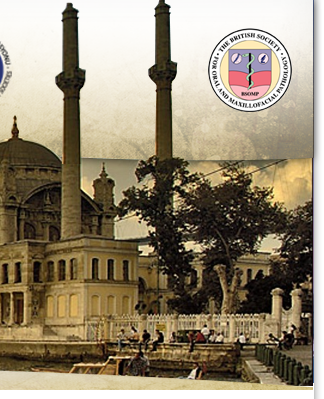|
HISTORICAL PLACES
Dolmabahçe Palace
The palace is located on the opposite side of Üsküdar at a point between Kabataş and Beşiktaş along the coastline from Karaköy to Sarıyer and on the coastline to the left while travelling from the Sea of Marmara to the Bosphorus Strait by sea. The Palace was named Dolmabahçe since it was placed on a filled site. The construction of the Palace was financed by external funds.
Beylerbeyi Palace
The palace designed by Sarkis Balyan by order of Sultan Abdülaziz was built between 1861 and 1865 on the site of an old palace.
Topkapı Palace
This is the oldest and the largest palace in Istanbul and in the world which has survived to this day. It is located on the acropolis known as the first established site of Istanbul and overlooks the Golden Horn, the Bosphorus Strait and the Sea of Marmara. It is a complex located on a site of 700,000 meter square site at the tip of the Istanbul peninsula surrounded by walls of 5 km long.
Yıldız Palace
This palace which is located in the Beşiktaş district of Istanbul was constructed for Mihrişah Sultan, mother of Sultan Selim III (1789-1807) and used by Ottoman Sultan Abdülhamid II as the seat of the Ottoman government. Unlike Dolmabahçe Palace which is a single building, Yıldız Palace consists of a garden extending from the coast of the Sea of Marmara to the northwest of the site and covering the entire hillside and of palaces, mansions, state apartments, security and service buildings and parks located inside the woodland.
Çırağan Palace
This historical palace is located on Çırağan Street of the Beşiktaş district of Istanbul. The most beautiful sites of the Golden Horn and the Bosphorus Strait were allocated to sultans and important persons for their palaces and mansions. Most of those buildings vanished in time. It was built by order of Sultan Abdülaziz in 1871 on the site of an old wooden palace and designed by palace architect Serkis Balyan. The palace was built in four years at a cost of four million gold. The inner walls and the roof were made of wood and the outer walls were made of marble. The construction of the palace was financed by borrowing from European countries.
The columns of the Palace which are the most beautiful examples of stone work were completed by richly decorated places. Rooms were decorated with precious carpets and furniture gilded and engraved with mother-of-pearl. Çırağan Palace hosted many important meetings as did other palaces located on the Bosphorus. The façades of the Palace were decorated with colorful marble and monumental doors. It was connected with a bridge to Yıldız Palace. It was surrounded by high walls on the street side. Çırağan Palace burned down in 1910. The ruined palace was restored after a very long time and converted into a five star hotel. It has a decorative pool, a pier and a helipad in its garden. Today it hosts many social activities.
Taksim Square
Taksim district and square took this name from the stone reservoir from which water was distributed to Galata and Beyoğlu. Taksim, which used to be a narrow district lined with old houses, took its current shape after being extended as a square. The Republic Monument located in the middle of the square and its surroundings are used for ceremonial occasions and serve as a meeting place. A nostalgic tram runs from the square to the Tünel.
The symbol of Taksim Square, the Republic Monument, was created by the Italian sculptor Pietro Canonica and constructed in 1928. It was built in two and a half years and was made of stone and bronze. It was built with financial support from the public. The Republic Monument is the first monument of the Republic Period that symbolizes Atatürk and the new order in a figurative manner. Taksim became an important site for various occasions with the placement of the monument in the square.
Sultanahmet Square
Sultanahmet Square is one of the most important squares of Istanbul. It was used as a hippodrome during the Byzantine period. The word hippodrome means horse path which comes from the Greek words hippos and dromos. It was called Horse Square during the Ottoman period.
Important structures and monuments from the Byzantine period few of which survived to this day were built around the hippodrome. Empire palace which was known as the "Great Palace" extended from the hippodrome to the coastline. The mosaic floor of the big hall has survived from the Great Palace to this day. The most important square of the city was Agusteion and a triumphal arch was placed between the square and the street. The street was the beginning of the road ending in Rome and the first milestone was located there.
During the Ottoman Empire, Janissary revolts took place in the hippodrome and it was used for forty days long circumcision ceremonies and festivals. In 1920, the Sultanahmet demonstration during which Halide Edip made a speech against occupation took place in the hippodrome.
The German Fountain which was constructed to commemorate the anniversary of Emperor Wilhelm's visit to Istanbul is located in the middle of the square. Istanbul Palace of Justice is located on the west side of the square. Today the square is the most important tourist hub of Istanbul.
Beyazıt Square
Beyazıt Square is a historical square located in the Eminönü district of Istanbul. It is a home to Istanbul University and Historical Grand Bazaar. This tourist destination is also where Beyazıt Mosque is located.
|





